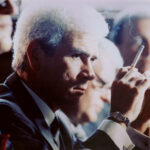The name John Birch often evokes strong reactions, primarily due to its association with the John Birch Society, a controversial political organization that emerged during the Cold War. However, the man behind the name, John Birch himself, remains a figure of historical interest in his own right. Understanding John Birch requires looking beyond the society that adopted his name and delving into his life as a missionary and intelligence officer in China during a tumultuous period.
John Birch’s story begins far from the political battles of mid-20th century America. Born in India in 1918 to missionary parents, his early life was steeped in a devout religious atmosphere. This fundamentalist upbringing heavily influenced his worldview, shaping his later decisions and actions. Returning to the United States, Birch grew up in New Jersey and Georgia, and pursued higher education at Mercer University in Macon, Georgia. Even in his youth, Birch displayed a fervent and sometimes uncompromising nature. One notable episode during his time at Mercer involved his participation in a student group accusing theology professors of heresy, highlighting his unwavering commitment to his beliefs, even when facing opposition. Despite this controversy, he graduated at the top of his class, demonstrating his intellectual capabilities alongside his passionate convictions. Furthering his religious studies, Birch attended a Bible institute run by the prominent fundamentalist preacher J. Frank Norris, who recognized Birch’s potential and guided him towards missionary work in China.
In 1940, John Birch arrived in China as a Baptist missionary, initially stationed in Hangzhou. He immersed himself in the language and culture, quickly becoming fluent in Mandarin. This linguistic proficiency and his genuine respect for the Chinese people set him apart from many of his contemporaries. As World War II intensified and Japan’s aggression in China escalated, Birch’s role began to shift. He moved to Shangrao, navigating the perilous environment with increasing involvement in intelligence gathering. By 1942, he was officially working with American intelligence, leveraging his deep knowledge of the region and his language skills to aid the Allied war effort against Japan. This transition from missionary work to military intelligence highlights a significant turning point in his life, driven by the escalating global conflict and his desire to contribute to a cause he believed in. Tragically, John Birch’s life was cut short in August 1945, just weeks after the end of World War II. While traveling in China, he was killed by Chinese communist soldiers. The circumstances surrounding his death remain debated, but it was this event that would later propel him into a different kind of historical significance.
It was Robert Welch, a businessman and staunch anti-communist, who would bring John Birch’s name to the forefront of American political discourse. In 1958, Welch founded the John Birch Society, naming it in honor of Birch, whom he declared to be the “first casualty of the Cold War.” Welch’s interpretation of Birch’s death, and his broader anti-communist ideology, became the cornerstone of the John Birch Society. The society quickly grew into a prominent force on the American political fringe, fueled by Cold War anxieties and a deep suspicion of communism’s global influence. The John Birch Society advocated for a range of conservative positions, including limited government, strong national defense, and a staunch opposition to any form of communism or perceived communist influence within the United States government. Their platform included controversial stances such as advocating for the withdrawal of the United States from the United Nations and even promoting conspiracy theories, including the notion that President Dwight D. Eisenhower was secretly a communist agent. These extreme views, while resonating with a segment of the American population, also drew significant criticism and placed the society on the fringes of mainstream political discourse.
The John Birch Society’s influence peaked in the 1960s, a period of intense social and political upheaval in the United States. The society became intertwined with the rise of conservative figures like Barry Goldwater. While Goldwater himself maintained a degree of distance from the most extreme pronouncements of the society, he benefited from the grassroots activism and financial support of its members during his 1964 presidential campaign. This association, however, proved to be a double-edged sword. Goldwater’s opponents effectively used the John Birch Society connection to portray him as an extremist, contributing to his landslide defeat in the election. Later, Richard Nixon, another key figure in the Republican party, also had a complex relationship with the John Birch Society. Initially, the society opposed Nixon, viewing him as insufficiently conservative. However, Nixon, a shrewd political operator, eventually managed to capture the support of many conservatives, even those who had previously aligned with the John Birch Society, as he navigated the changing political landscape. Despite its initial fervor, the John Birch Society’s influence gradually waned over the decades. Its extreme views and conspiratorial tendencies alienated it from the mainstream, and it became increasingly marginalized in American politics.
Ultimately, the legacy of John Birch is complex and multifaceted. He was a man of deep faith and conviction who served as a missionary and intelligence officer in a turbulent era. While his life was tragically cut short, his name became synonymous with a particular brand of American conservatism through the John Birch Society. It is crucial to distinguish between John Birch the individual and the political society that adopted his name. While the John Birch Society remains a controversial chapter in American political history, understanding the life of John Birch himself provides valuable insight into the historical context that gave rise to the society and the enduring complexities of the Cold War era. His story serves as a reminder of the individuals whose lives become intertwined with larger historical movements, often in ways they could never have imagined.

